Gender Differences in Survival among Adult Patients Starting Antiretroviral Therapy in South Africa: A Multicentre Cohort Study
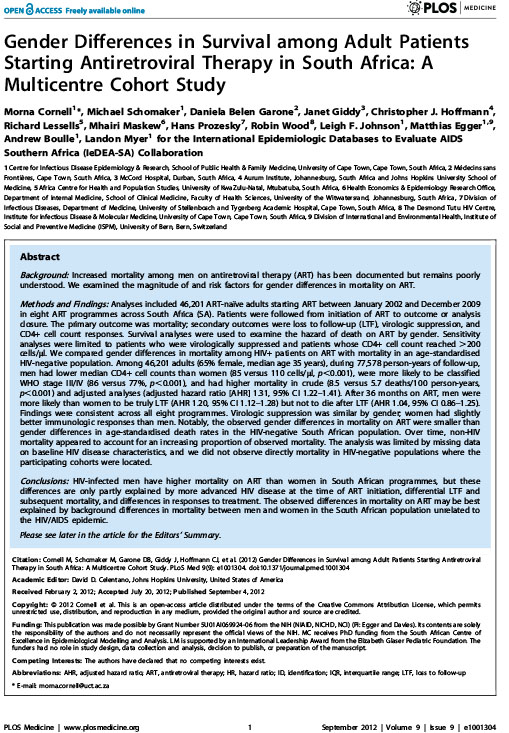
Background Increased mortality among men on antiretroviral therapy (ART) has been documented but remains poorly understood. We examined the magnitude of and risk factors for gender differences in mortality on ART. Methods and Findings Analyses included 46,201 ART-naïve adults starting ART between January 2002 and December 2009 in eight ART programmes across South Africa (SA). […]
Does the success of HIV treatment depend on gender?
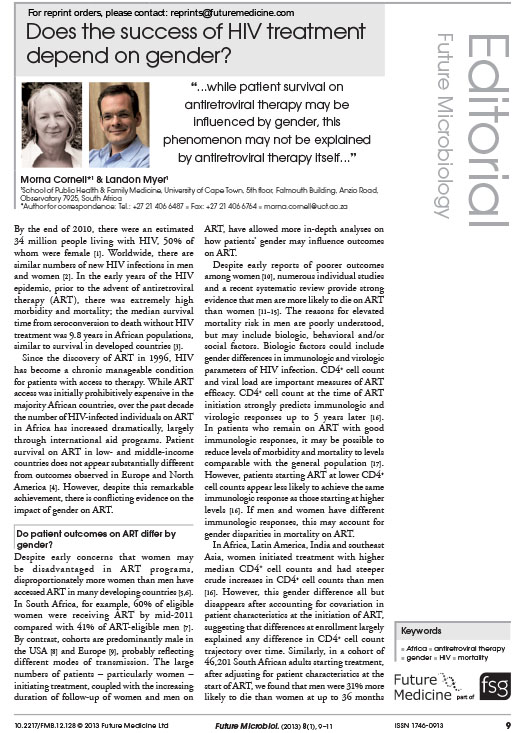
By the end of 2010, there were an estimated 34 million people living with HIV, 50% of whom were female. Worldwide, there are similar numbers of new HIV infections in men and women. In the early years of the HIV epidemic, prior to the advent of antiretroviral therapy (ART), there was extremely high morbidity and […]
Gender and the Use of Antiretroviral Treatment in Resource-Constrained Settings: Findings from a Multicenter Collaboration

Aims: To compare the gender distribution of HIV-infected adults receiving highly active antiretroviral treatment (HAART) in resource-constrained settings with estimates of the gender distribution of HIV infection; to describe the clinical characteristics of women and men receiving HAART. Methods: The Antiretroviral Therapy in Lower-Income Countries, ART-LINC Collaboration is a network of clinics providing HAART in Africa, Latin […]
Mass HIV Treatment and Sex Disparities in Life Expectancy: Demographic Surveillance in Rural South Africa
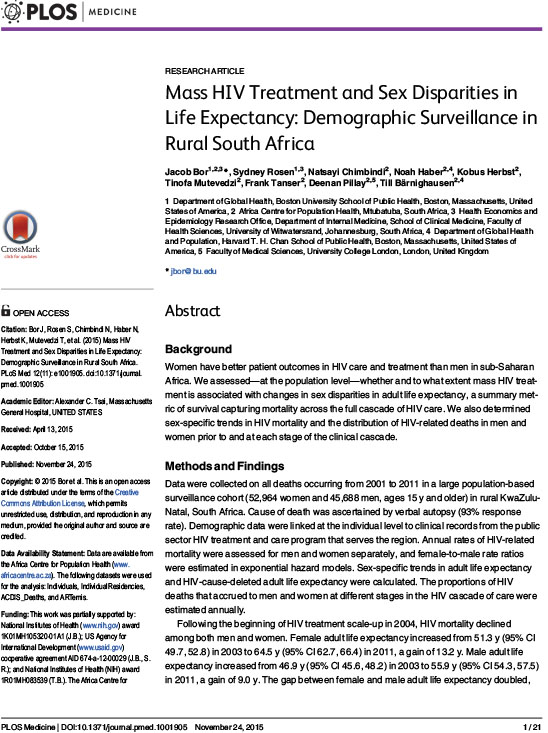
Background Women have better patient outcomes in HIV care and treatment than men in sub-Saharan Africa. We assessed—at the population level—whether and to what extent mass HIV treatment is associated with changes in sex disparities in adult life expectancy, a summary metric of survival capturing mortality across the full cascade of HIV care. We also […]
Men’s health: a global problem requiring global solutions
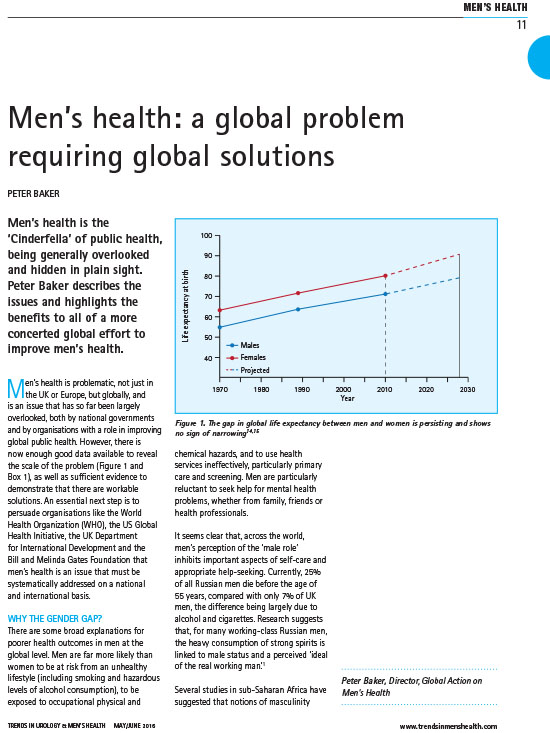
Men’s health is the ‘Cinderfella’ of public health, being generally overlooked and hidden in plain sight. Peter Baker describes the issues and highlights the benefits to all of a more concerted global effort to improve men’s health.
The men’s health gap: men must be included in the global health equity agenda
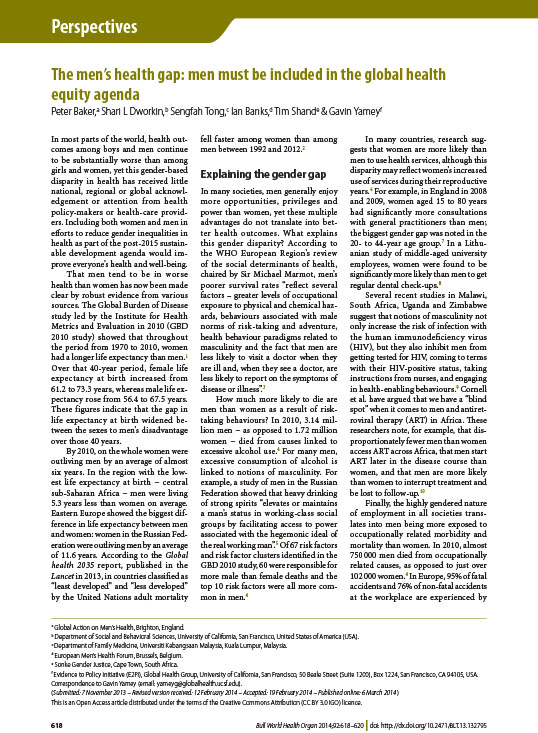
In most parts of the world, health outcomes among boys and men continue to be substantially worse than among girls and women, yet this gender-based disparity in health has received little national, regional or global acknowledgement or attention from health policy-makers or health-care providers. Including both women and men in efforts to reduce gender inequalities […]
Are there differences in disease progression and mortality among male and female HIV patients on antiretroviral therapy? A meta-analysis of observational cohorts
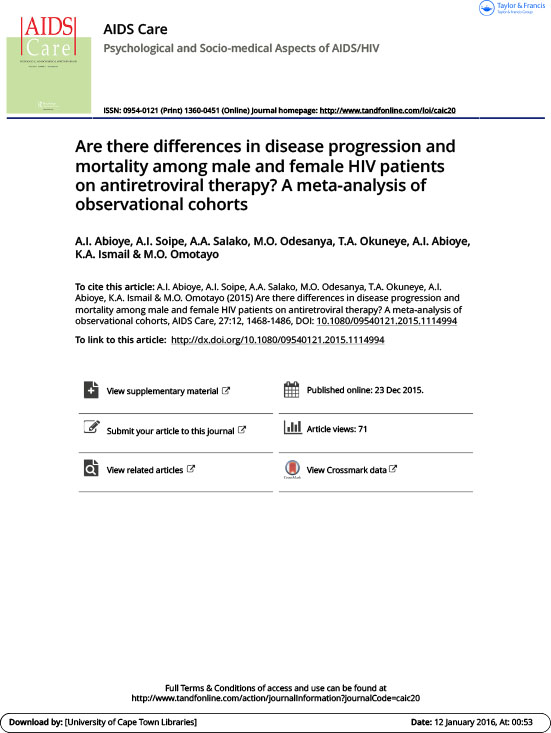
Studies examining the sex differences in morbidity and mortality among HIV/AIDS patients have yielded inconsistent results. We conducted a meta-analysis of sex differences in disease progression and mortality among HIV/AIDS patients. Medical literature databases from inception to August 2014 were searched for published observational studies assessing sex differences in immunologic and virologic response, disease progression […]
Why now for a Series on gender equality, norms, and health?

When this Series on gender equality, norms, and health was first conceptualised in 2015, we were surprised by how little targeted effort and impact had been achieved at this intersection, despite compelling evidence that gender equality improves health and wellbeing. The 2030 Agenda for Sustainable Development and the universal health coverage goals demand greater attention to […]
Sarah Hawkes: shining a gender lens on global health
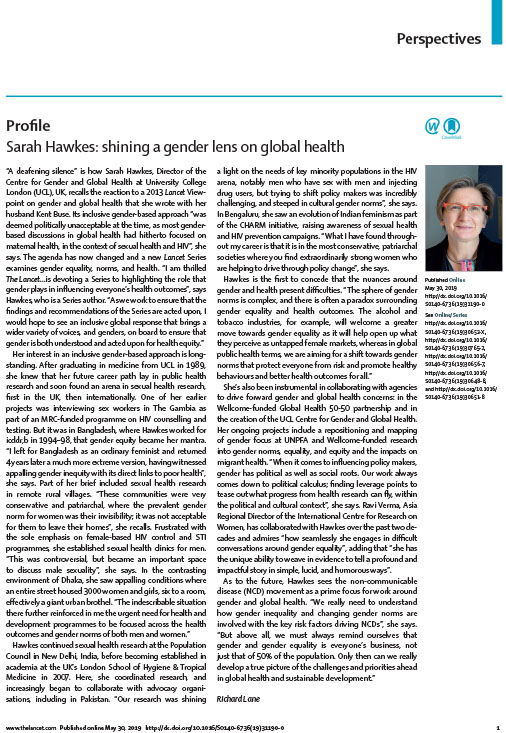
“A deafening silence” is how Sarah Hawkes, Director of the Centre for Gender and Global Health at University College London (UCL), UK, recalls the reaction to a 2013 Lancet Viewpoint on gender and global health that she wrote with her husband Kent Buse. Its inclusive gender-based approach “was deemed politically unacceptable at the time, as most gender-based […]
Improving health with programmatic, legal, and policy approaches to reduce gender inequality and change restrictive gender norms
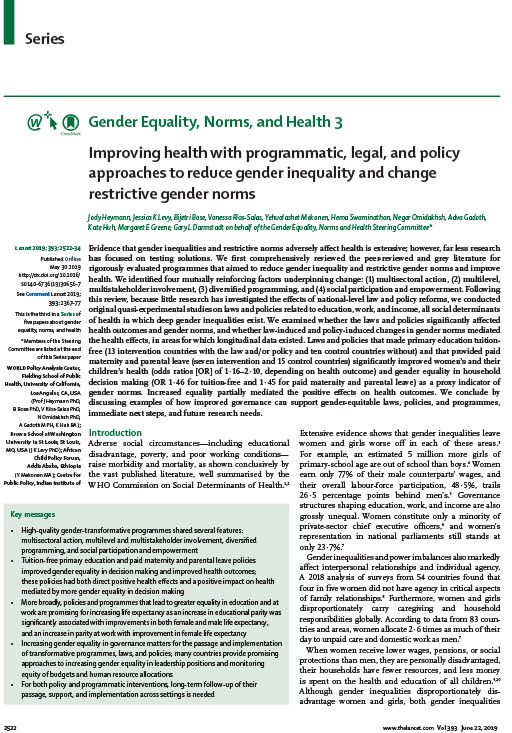
Evidence that gender inequalities and restrictive norms adversely affect health is extensive; however, far less research has focused on testing solutions. We first comprehensively reviewed the peer-reviewed and grey literature for rigorously evaluated programmes that aimed to reduce gender inequality and restrictive gender norms and improve health. We identified four mutually reinforcing factors underpinning change: […]


